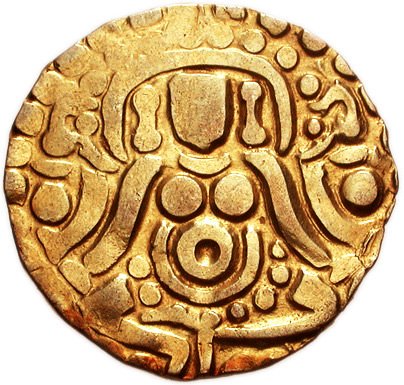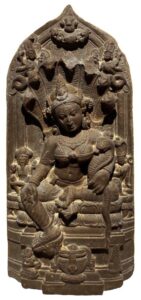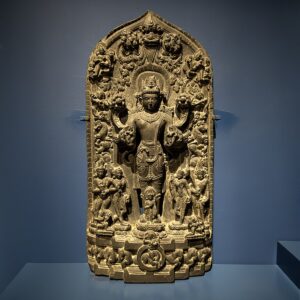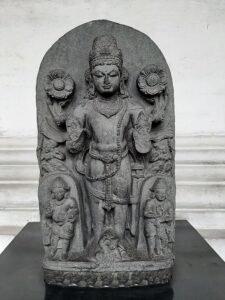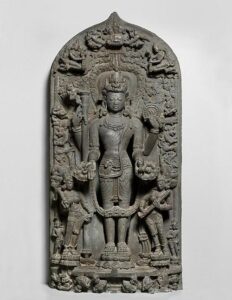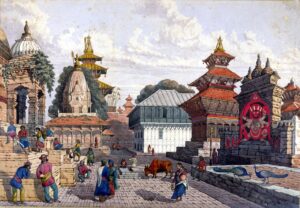Pala dynasty, a ruling dynasty in Bihar and Bengal, India, from the 8th to the 12th century. Its founder, Gopala, was a local chieftain who rose to power in the mid-8th century during a period of anarchy. His successor, Dharmapala (reigned c. 770–810), greatly expanded the kingdom and for a while was in control of Kannauj. Pala power was maintained under Devapala (reigned c. 810–850), who carried out raids in the north, the Deccan, and the peninsula; but thereafter the dynasty declined in power, and Mahendrapala, the Gurjara-Pratihara emperor of Kannauj in the late 9th and early 10th centuries, penetrated as far as northern Bengal. Pala strength was restored by Mahipala I (reigned c. 988–1038), whose influence reached as far as Varanasi, but on his death, the kingdom again weakened.
Ramapala (reigned c. 1077–1120), the last important Pala king, did much to strengthen the dynasty in Bengal and expanded its power in Assam and Orissa; he is the hero of a Sanskrit historical poem, the Ramacarita of Sandhyakara. On his death, however, the dynasty was virtually eclipsed by the rising power of the Senas, though Pala kings continued to rule in southern Bihar for 40 years. The main capital of the Palas appears to have been Mudgagiri (now Munger) in eastern Bihar. The Pala stronghold was located in Bengal and eastern Bihar, which included the major cities of Gauḍa, Vikramapura, Pāṭaliputra, Monghyr, Somapura, Ramavati (Varendra), Tāmralipta and Jagaddala.
The Palas were patrons of Mahayana Buddhism, and it was through missionaries from their kingdom that Buddhism was finally established in Tibet. Under Pala’s patronage, a distinctive school of art arose, of which many noteworthy sculptures in stone and metal survive.
The Palas developed the Buddhist centres of learning, such as the Vikramashila and the Nalanda universities. Nalanda considered one of the first great universities in recorded history, reached its height under the patronage of the Palas.
Art & Architecture:
The Pala school of sculptural art is recognised as a distinct phase of Indian art and is noted for the artistic genius of the Bengal sculptors. It is influenced by the Gupta art.
The Pala style was inherited and continued to develop under the Sena Empire. During this time, the style of sculpture changed from “Post-Gupta” to a distinctive style that was widely influential in other areas and later centuries. Deity figures became more rigid in posture, very often standing with straight legs close together, and figures were often heavily loaded with jewellery; they very often had multiple arms, a convention allowing them to hold many attributes and display mudras. The typical form for temple images is a slab with a main figure, rather over half-life-size, in very high relief, surrounded by smaller attendant figures, who might have freer tribhanga poses. Critics have found the style tending towards over-elaboration. The quality of the carving is generally very high, with crisp, precise detail.

